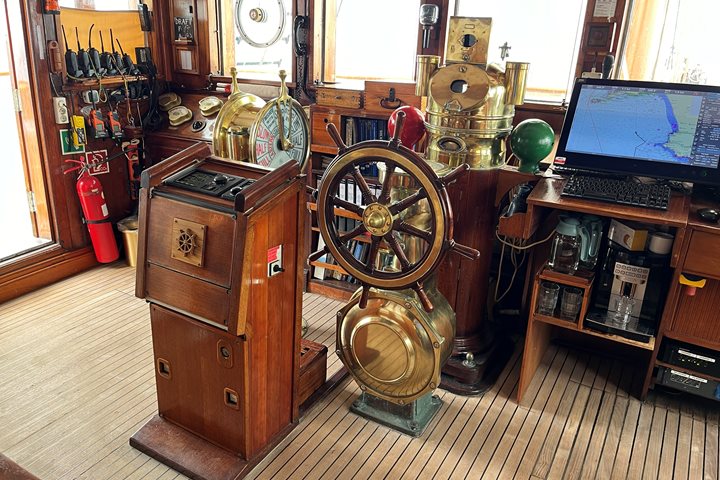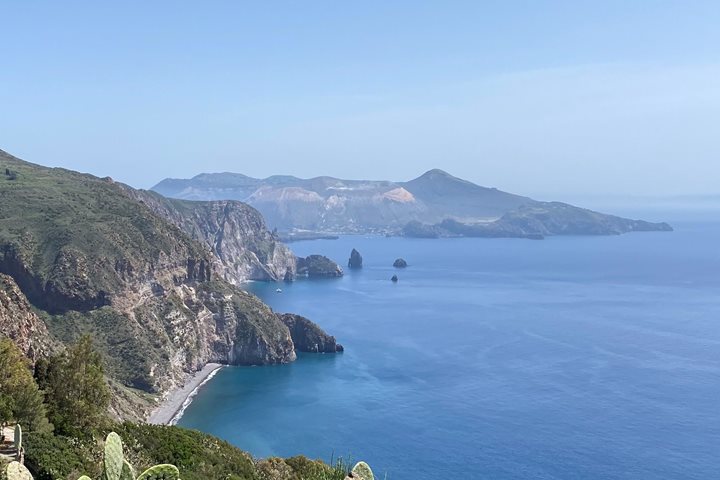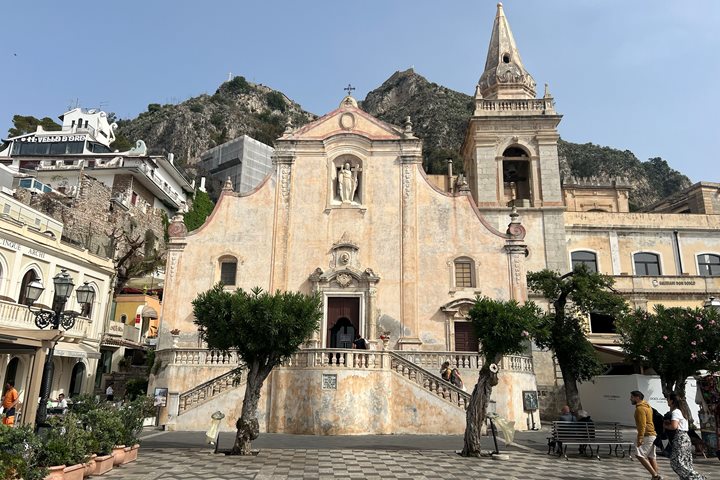Our first full day aboard Sea Cloud has been an interesting one to say the least. We were greeted in Naples with unseasonably cool and wet weather. While we are on the cusp of the Mediterranean summer, it felt more like autumn. This was due to a strong weather system off the southwest of Sicily, with 40+ knot winds and the rough seas that come with it. It even prompted authorities to implement some emergency measures – commercial shipping was unable to enter or exit ports due to safety concerns. Thus, we had to alter our plans, which originally took us along the west and southwest coasts of Sicily, right into the thick of it! Instead, we arranged an alternative itinerary that took us to the Sicilian capital of Palermo, keeping us relatively sheltered along the north coast of the island and clear of the wildest weather.
In the morning, while still on approach to Palermo, we began our expedition program with Captain John Svendsen giving us an introduction to the forecasting software that allows us to peer into the future and avoid hectic conditions. Many different weather phenomena – wind speed, wind gusts, swell, precipitation etc – can be overlaid on the map, showing us where we don’t want to be tomorrow, or even a few days from now. When we saw the “purple dragon” storm cell lurking off the southwest coast, we knew we didn’t want to be anywhere near it!
The morning program continued with certified photo instructor Jose Calvo taking us through iPhone photography, highlighting the many different functions and techniques we can use to capture our memories. After our buffet lunch, expedition historian David Brotherson gave a presentation on the Phoenicians, those often overlooked yet important intermediaries whose trade networks brought goods and ideas from the East into the Mediterranean world.
In the afternoon, we headed ashore for a tour of the Sicilian capital. Founded by Phoenician merchants almost 3000 years ago, Palermo became the island’s capital during the Arab era in the 9th century. In the late 11th century, the Normans conquered Southern Italy and Sicily, creating a kingdom that lasted for many centuries. At the crossroads of Mediterranean trade routes, the multiethnic cosmopolitan population the Normans ruled is manifested in many beautiful and utterly unique ways. The UNESCO Heritage list architecture blends the Norman Romanesque columns and arches, with Byzantine mosaics, and Arabic geometric patterns. The architecture of Norman Sicily is truly at the crossroads of material culture.







